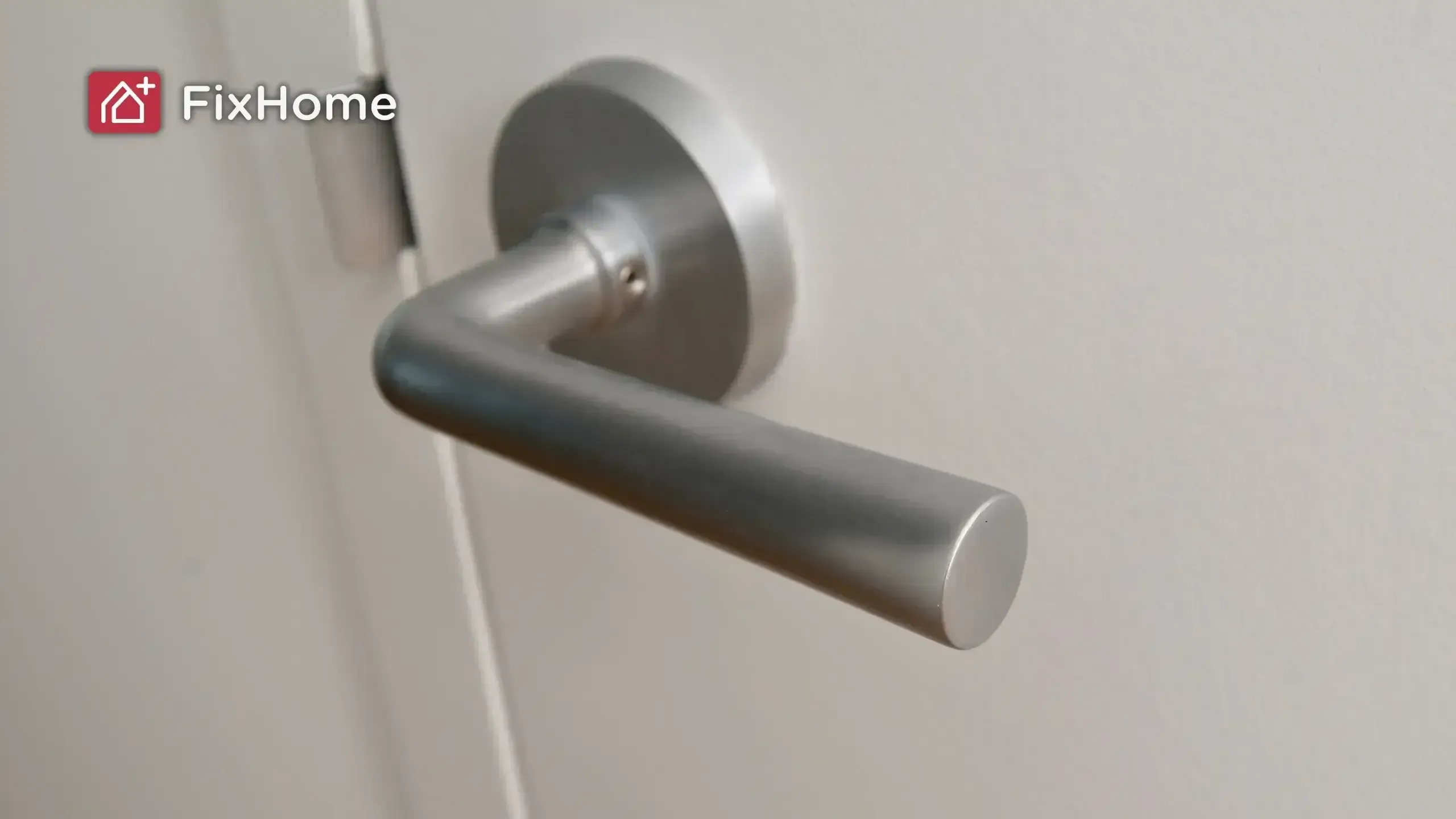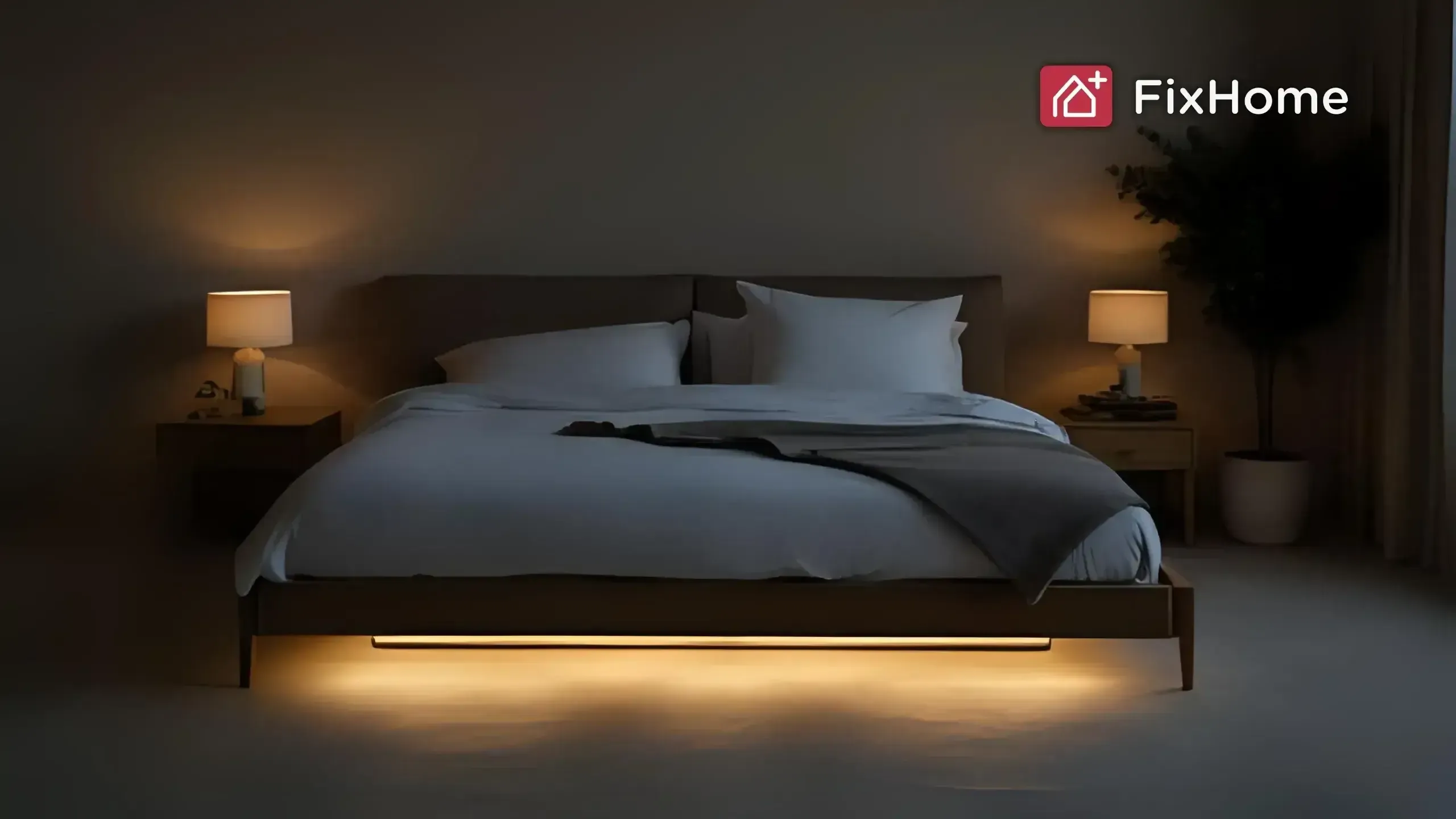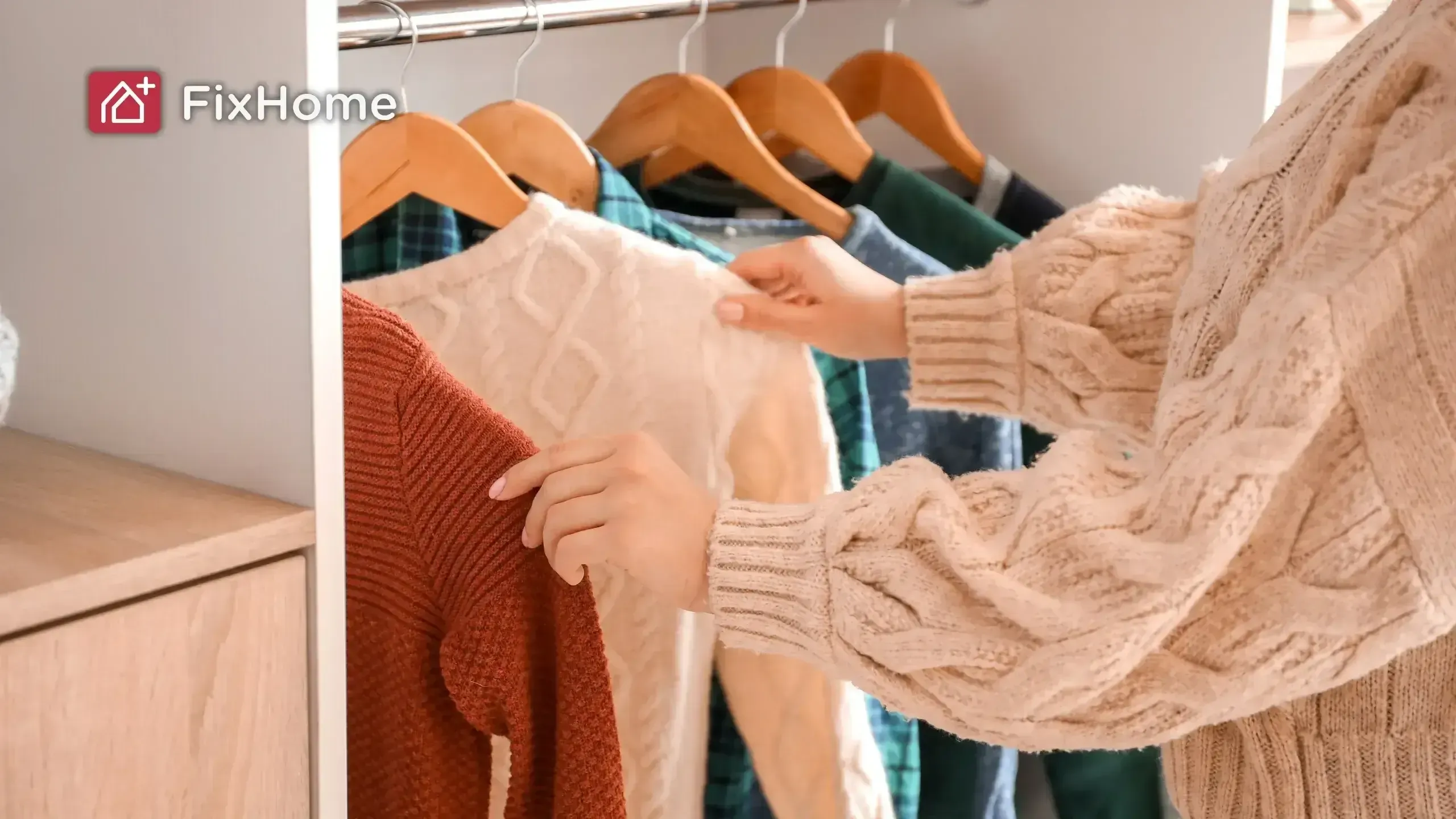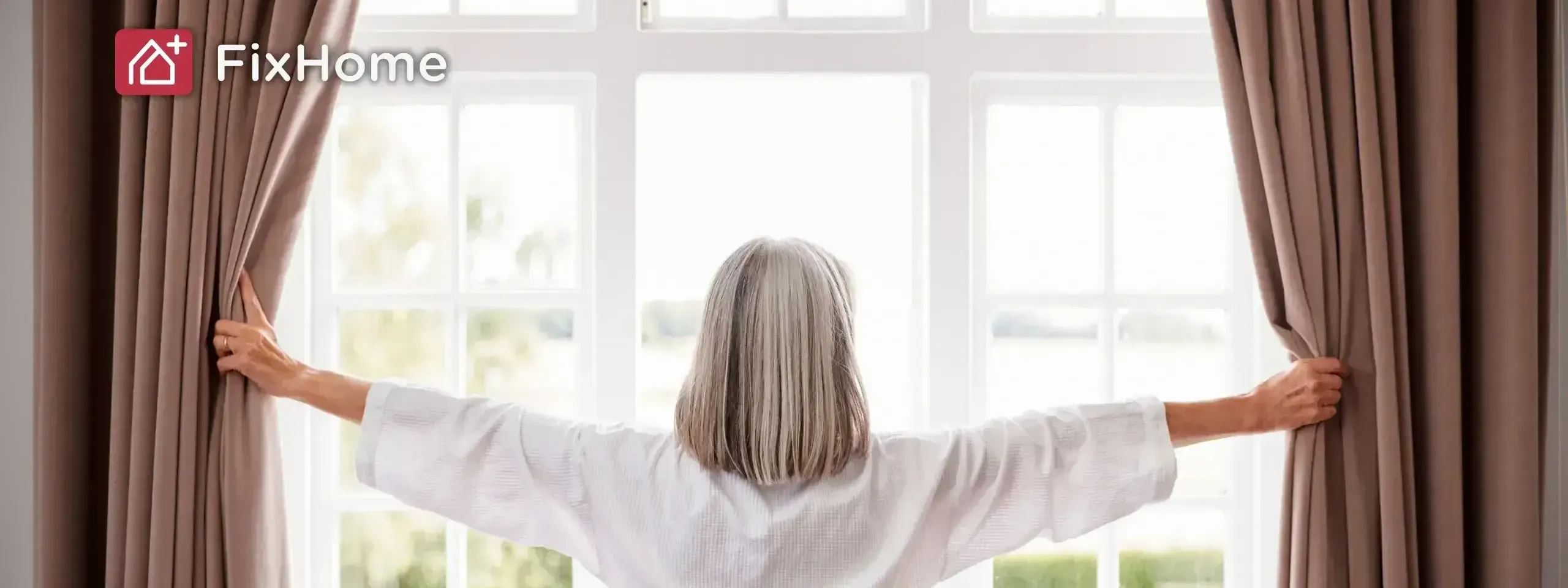Main Takeaway
These six proven senior bedroom safety tips create a safe environment for older adults. It helps maintain independence and confidence in their own homes. These modifications work as an integrated system, not individual solutions. Implementing them preventively—before an accident occurs—transforms the bedroom into a secure space that supports successful aging in place.
Quick Navigation:
- Why Senior Bedroom Safety Matters - About the importance of bedroom modifications
- Non-Slip Flooring Solutions - Eliminating the #1 cause of bedroom injuries
- Bed Rails and Assist Bars - Installing support systems for enabling people to be less restrained in movements.
- Emergency Response Systems - Ensuring help is always within reach
- Lever Door Handles - Senior-friendly hardware alternatives
- Enhanced Lighting Systems - Safe navigation during night hours
- Accessible Storage Solutions - Organize bedroom storage at a reachable height for you or your parents.
- Creating Your Senior-Safe Bedroom Action Plan
Did you know that a fourth of adults 65 years and older fall every year? Falls result in more than 3 million emergency room visits each year for seniors, and many falls take place in bedrooms at night. As our family members get older, we need to make their bedrooms safer so they don't get hurt.
FixHome+ handyman experts have assisted senior homes in Northwest Chicago suburbs for more than a decade. We've seen how making a few small changes can make a huge difference. We talk about reducing the risk of falls and other accidents.
These senior bedroom safety recommendations are all about practical, budget-friendly changes that give immediate results. Through the implementation of these safety features, you're preserving independence, preserving dignity, and providing peace of mind for families.
Why Senior Bedroom Safety Matters
In fact, such a cozy place as a bedroom offers some challenges to older people that most families are not aware of. Unlike other spaces where the elderly tend to move purposefully and consciously, the bedroom environment contains dangerous intervals: dressing, walking in dim light, and tripping when tired or disoriented.
What is the typical senior's bedroom routine? There are a number of transitions that occur throughout the day and evening: the bed to bathroom, bed to closet, and many nocturnal trips. Each transition is an opportunity for accidents, especially when there is loss of sight, loss of balance, or loss of mobility. The risk factor is higher when you add in medications that cause dizziness or drowsiness.
Non-Slip Flooring and Replacement of Hazardous Rugs

Falls due to loose rugs and slippery floors represent the leading cause of injury among seniors in the United States. That makes flooring modifications your most critical bedroom safety investment. We described in our previous article about the adapted handyman for the elderly, this problem.
Surface Dangers
In the bedroom, where seniors may be moving around in socks or slippers, even minor surface irregularities can become serious tripping hazards. When we install non-slip flooring solutions, we're essentially creating a foundation of safety that supports every other daily activity.
For hardwood floors, install nearly invisible grip strips or apply non-slip coatings that add safety without changing the wood's natural look. Tile floors benefit from textured sealers that provide excellent grip while remaining easy to clean.
Rug Placement Solutions
Traditional area rugs, while aesthetically pleasing, and at first glance can be a slip-resistant solution. But on the other hand, it creates multiple hazards in senior bedrooms. The edges can curl up over time, creating catch points for feet or mobility aids. Even the flattest rugs will occasionally slip, allowing an individual to easily lose their balance when stepping from the rug onto the floor.
Never install area rugs in traffic lanes or transition areas between flooring surfaces. Rather, consider securing them in set positions like near seating areas, where they will not interfere with walking routes.
Place cushioned rug alternatives where they're needed most - right beside the bed where people step when getting out of bed. Rubber-backed or non-slip rugs work great for this, as they're made to stay in place on a wide range of surfaces.
Bed Rails for Independence

Bed assist bars and bed rails are particularly aimed at the challenging process of getting into and out of bed safely. Both are frequently recommended by occupational therapists and geriatric practitioners. They provide physical support, increase confidence, and reduce the need for caregiver help, essential for fall prevention and independence.
Bed Assist Systems Options
Adjustable bed rails can be installed on most mattress types without requiring bed frame adaptation. Swing-away versions provide easy access with support available if needed. In some elderly individuals with specific mobility impairments, bed ladder systems offer added pulling assistance during change of position.
Installation Tips
When choosing where to put a senior's bed rails, put them on the side that the elderly most often get out of bed. If they're right-handed, place it on the right side of the bed. However, if seniors have a weakness on one side of their body, place it on their stronger side instead. Make sure the older person can reach it comfortably when they are lying down by sitting on the edge of the bed. And see where you are going to put the rail - the arm should not be stretched, but comfortable.
When choosing bed rails, find one that is well-built to support at least 250 pounds. Also, it requires a non-slip traction, smooth finishes, and a size that will accommodate the mattress and bed frame. Typically 16-20 inches tall and at least 18 inches long. Installation is important—read directions carefully, and make sure it is stable.
Three dangerous mistakes to avoid:
- Never put rails on both sides of the bed
- Make sure there are no gaps between the mattress and the rail
- Don't use rails that only clamp to the mattress
Emergency Response Systems At Home

Having an easily accessible system for emergency assistance—e.g., alarm devices worn or call units mounted on the bed. It is an everyday safety feature that ensures prompt help in case of falls or medical emergencies. These systems provide precious peace of mind to seniors and their families, knowing assistance is just a button press away.
Emergency response systems have traveled a long, long way from the old "I've fallen and can't get up" devices. Systems today are made to interface with smart home systems. They offer GPS tracking and automatically sense falls without having the user press a button.
Wearable Alert Devices for 24/7 Protection
Wearable emergency equipment gives round-the-clock protection even when seniors are in the bathroom or sleeping. Contemporary wearable systems come with waterproof designs, extended battery life, and advanced fall detection software that can distinguish between normal and actual emergencies.
The most popular devices are the ones that they will wear every day. The majority of older adults prefer pendant-type devices during the day. Also, learn about the types of wristbands to sleep with to have consistent protection without discomfort.
Bedside Call Button Systems
Bedside call buttons provide an extra layer of emergency response for bedroom-specific situations. These are especially useful for seniors who don't wear devices at night or can't easily press small buttons. You can have bedside systems connect with family members' phones, professional monitoring services, or both.
Bedside call buttons, properly placed, are accessible even if the elder person is slipping by the bed. Multiple button placements around the room, like near the nightstand. Also, place call buttons near bedroom furniture, by the door, and in the attached bathroom.
Lever Door Handles for Effortless Access

Lever door handles are most suitable for older people because they can be operated more conveniently than doorknobs.
Better for Aging Parents
They do not require as much bodily movement and no wrist twisting, and thus, they can accommodate persons with compromised motor skills. This simple adjustment can play an important part in daily independence and safety. Twist-type doorknobs require a twist, which is challenging for the elderly who have arthritis or compromised grip strength. Lever handles, on the other hand, are merely pressed down by an elbow, forearm, or palm.
Safety and Well
They are such a blessing to users of mobility aids. Someone with a cane or walker can open a lever handle quite easily without having to forgo stability. This is especially handy on bathroom doors, where quick access will frequently be required. New lever handles incorporate such safety features as emergency overrides to prevent lockouts. They provide caregivers with the ability to access rooms in the house quickly if needed.
Safe Lighting Solutions for Aging in Place

About enhanced lighting solutions, we often mention in general home safety guides. It deserves special attention in bedroom-specific safety planning. Seniors' eyes need more light during nighttime hours when their vision is not as in their younger years.
Poor bedroom lighting makes it difficult to see obstacles, changes in floor level, or furniture edges. Harsh bright light causes temporary blindness and disorientation. The solution lies in layered lighting systems that facilitate safe navigation without visual disruption.
Motion-Activated Systems
Modern motion-activated nightlights are a significant upgrade from standard plug-in units. These systems create gentle paths of light that automatically illuminate as seniors move through the room. The lights are bright enough for safe navigation but are also designed to preserve night vision and not disturb sleep patterns.
Typically, you'll need to put up multiple motion sensors for complete coverage. One near the bed, one in front of the bathroom door, and more along hallways or stairs that you walk often. The lights illuminate in sequence, creating a path of light that guides movement safely. Brightness and color temperature adjustability are offered in numerous systems to fit individual preferences and needs.
Smart Lighting
Recent years have seen the popularity of voice command or smartphone app-controlled smart lighting systems. The elderly can switch lights on or off, dim lighting, or activate emergency lighting modes without physical switches. These systems typically have backup power supplies to ensure lighting in case of power failures. Lighting control technologies allow seniors to easily make changes to the lighting without the need for extra physical effort.
Accessible Storage Solutions

While accessible storage solutions may not receive as much attention as flooring or emergency systems. Organizing bedroom shelves at reachable heights represents a crucial safety modification that prevents countless common accidents. The tendency to overreach or bend dangerously to access needed items.
The reality of aging bodies is that movements once considered simple are no longer easy. Tasks like reaching high shelves or bending to low drawers can pose a risk of significant injury. Loss of balance while stretching, muscle strain from awkward positions, and falls from attempting to reach too far. That is all the representable preventable accidents that proper storage planning eliminates.
The Right Placement for Daily Items
Make modifications that focus on creating what occupational therapists call the "golden zone". The area between waist and shoulder height is where items can be accessed safely without bending or overreaching. Install shelving, drawers, and cabinets within this zone for all frequently used items, including medications, clothing, personal care products, and emergency supplies.
Consider clear, labeled containers that make it easy to identify contents. They don't need to move multiple items, and require reducing the time spent in potentially unstable positions.
Bedroom Furniture Modifications
Sometimes accessible storage requires modifying existing bedroom furniture or replacing pieces that no longer serve senior safety needs. Replace tall dressers with wide, low ones that put storage at a safe height. Nightstand upgrades focus on versions with multiple easily accessed drawers rather than single deep compartments. In homes with elderly frequently install pull-out shelves in existing closets, converting hard-to-reach deep spaces into accessible storage.
Creating Your Senior-Safe Bedroom Action Plan
Transforming bedrooms into safe havens is a process. Start with short-term transformation: tripping hazard elimination, motion-activated lighting installation, and emergency response accessibility.
Proceed with structural transformation, like bed rails, lever handles, and storage relocation. Some of these transformations require planning and professional installation but provide long-term safety benefits. Finally, consider general lighting and special floor treatments.
Remember, bedroom safety evolves as needs evolve. Regular assessment finds new problems before they can lead to injury.
For comprehensive senior home safety, explore our detailed guide on the 5 essential features every senior's home must have. Senior homes should be better adapted to their residents, and these six safety features should be prioritized in every modification plan. tripping hazards tripping hazards
More from our blog.
Discover more insightful and engaging content from our blog.



